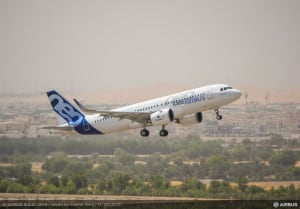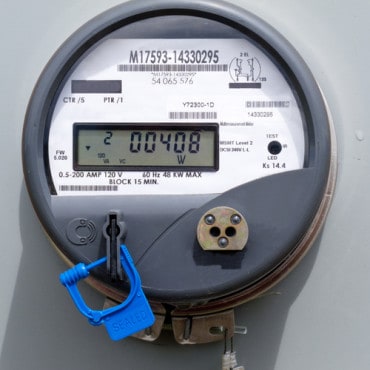
The Airbus platform for the “Factory of the Future” uses smart tools for real-time collaboration on manufacturing.
Name of Organization: Airbus
Industry: Aviation
Location: Blagnac, France
Business Opportunity or Challenge Encountered:
Designing, building and monitoring aircraft is a demanding task, requiring tight integration of people, processes and technology. The price of failure is too high for errors or mistakes in the production process. To meet these challenges, Airbus, a European consortium producing the Airbus family of passenger aircraft, a corporate jet, the Beluga supertransport and a military transport, is moving toward a vision of the “Factory of the Future,” which employs real-time integration of various production components.
The challenge for Airbus is to upgrade and update manufacturing processes where manual operations are still predominant. Manufacturing and assembly of aircraft, which involve tens of thousands of steps that must be followed by operators, and a single mistake in the process could cost hundreds of thousands of dollars to fix, making the room for error very small. A typical subassembly may have 400,000 points that need to be tightened down, which requires over 1,100 basic tightening tools. Having even a single location being tightened down incorrectly could cost hundreds of thousands of dollars.
“Millions of people every year place their trust in airbus aircraft to safely travel around the world,” says Bernard Dupuis, head of manufacturing technology research at Airbus. “That requires assembly of heavy large components. But most of these processes are still manually intensive. Our ‘Factory of the Future’ is a research project aimed to employ emerging technology address this challenging requirement to increase quality and productivity and industry evolution on all programs“
How This Business Opportunity or Challenge Was Met:
A vital component of Airbus’ Factory of the Future is to provide real-time views of its production processes. To address this need, the company has been developing a range of smart tools in conjunction with smart glasses to provide real-time streaming video to production operators.
Information sent to and from these headsets is integrated with various production systems. Advanced image-processing techniques help operators to track tools, and enable them to display real-time status of processes on operators’ screens.
“If everything is okay we can go to the next step,” says Dupuis. “If there is a process that is failing, we are able at task that process immediately.”
Airbus is developing three smart tool families for different manufacturing processes: drilling, measuring, and quality data logging and tightening. Adding such intelligence to the tools and shop-floor systems will help to simplify the production process and provide improved efficiency by managing and checking the tasks the operator is completing. Using the National Instruments (NI) System on Module, the Airbus manufacturing leaders were able to quickly prototype smart tools using NI’s approach to system design.
This approach to Airbus’s Factory of the Future vision – employing Internet of Things technologies along with smart machines and wearable devices — is helping to bring its systems together, as well as coordinate and share data.
Core to this effort is a platform approach that promotes greater linking, as well as sharing of projects and data across the enterprise.
“When we are integrating a project, we have issues regarding communication, regarding reuse,” explains Sébastien Boria, R&D technology leader for Airbus. “Thus, we are defining that new architecture based on software and hardware, and sharing of algorithms.”
Airbus’ Factory of the Future platform makes extensive use of commercial off-the-shelf modules. Another key component for improving efficiency in the Factory of the Future is smarter tools. These smart devices are designed to communicate with a main infrastructure or locally with operators or other tools, but only when it is required provide situational awareness and make real-time decisions based on local and distributed intelligence in the network.
Measurable/Quantifiable and “Soft” Benefits:
Airbus’ Factory of the Future platform lets operators and machines collaborate in the same physical environment.
“The Factory of the Future requires innovative thinking, and novel approaches to our production process,” says Dupuis “We believe cyber physical systems and data analytics are key technology elements to bring this vision into reality.”
The smart tools are helping to simplify the production process and improve efficiency by removing physical data logs and manuals. Operators must focus on their operational tasks, during which they need to keep their hands free for using the appropriate tools. Most of the previous initiatives linked to “paperless projects” were focused on “paper suppression,” or replacing paper with tablets, but they still consumed “passive/dead data.” Smart tools enable another alternative” “data in context” or live data, which is generated and consumed continuously.
By adding intelligence to the system, the smart tools understand the actions that the operator must perform next and automatically adjust the tools to the proper settings, which simplifies the task for the operator. Once the action is completed, the smart tools can also monitor and log the results of the action, which improves the efficiency of the production process. A smart tightening tool understands which task the operator is about to perform using vision to process its surroundings and automatically set the torque. The device can record the outcome of the task in a central database to ensure the location was set properly. With the central manufacturing execution system database and the distributed intelligence of the devices, production managers can precisely pinpoint the procedures and processes that need to be reviewed during quality control and certification.
“All of these devices and systems that make up factory of the future must be integrated as a co-existing system of systems,” says Dupuis. “In this next phase, we are addressing handheld smart tools so we can automatically control processes.” The team has also launched an Airbus software development kit to help disseminate the technology across its many manufacturing sites.
(Sources: National Instruments, Industrial Internet Consortium)
Want more? Check out our most-read content:
Frontiers in Artificial Intelligence for the IoT: White Paper
The Value of Bringing Analytics to the Edge
Five Big Data Trends: Emerging Technologies
Why Edge Computing Is Crucial for the IoT
No Recalls: A Smart Testing Approach for IoT Devices
Liked this article? Share it with your colleagues!






























